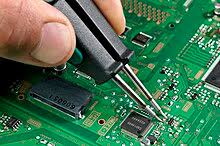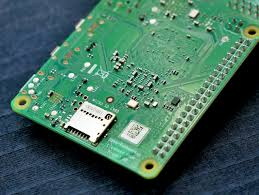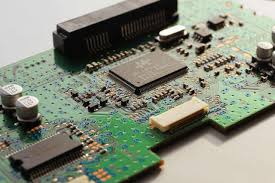Content Menu
● What is Surface Mount Technology?
>> Principles of Surface Mount Technology
● Advantages of Surface Mount Technology
>> 1. Miniaturization
>> 2. Reduced Manufacturing Costs
>> 3. Improved Performance
>> 4. Higher Component Density
>> 5. Enhanced Reliability
● Applications of Surface Mount Technology
>> Consumer Electronics
>> Automotive Industry
>> Medical Devices
>> Telecommunications
>> Aerospace and Defense
● Challenges Facing Surface Mount Technology
>> Thermal Management
>> Design Complexity
>> Repairability
● Future Trends in Surface Mount Technology
>> Advancements in Materials
>> Integration with IoT
>> Sustainability Efforts
● Conclusion
● FAQ
>> 1. What are the main advantages of surface mount technology?
>> 2. How does surface mount technology differ from traditional through-hole technology?
>> 3. What industries commonly use surface mount technology?
>> 4. What challenges does surface mount technology face?
>> 5. What future trends can we expect in surface mount technology?
In the ever-evolving landscape of electronics design, surface mount technology (SMT) has emerged as a cornerstone for modern manufacturing processes. This innovative approach to assembling electronic components has transformed how devices are built, enabling higher efficiency, reduced size, and improved performance. Understanding the principles and practices of SMT is essential for anyone involved in electronics design today. This article delves into the significance of surface mount technology, its advantages, applications, and the future it holds in the electronics industry.

What is Surface Mount Technology?
Surface mount technology refers to a method where electronic components are mounted directly onto the surface of printed circuit boards (PCBs). Unlike traditional through-hole technology, where components are inserted into holes drilled in the PCB, SMT allows for a more compact and efficient design. Components used in SMT are typically smaller and lighter, making them ideal for modern electronic devices that demand miniaturization.
Principles of Surface Mount Technology
The principles of SMT revolve around several key elements:
- Component Design: SMT components are designed with flat leads or terminals that can be soldered directly onto the PCB surface. This design minimizes space and weight.
- Soldering Techniques: The most common soldering techniques used in SMT include reflow soldering and wave soldering. Reflow soldering involves applying solder paste to the PCB pads, placing components on top, and then heating the assembly to melt the solder. Wave soldering is less common in SMT but can be used for specific applications.
- Automated Assembly: SMT relies heavily on automation for assembly processes. Pick-and-place machines are used to accurately position components on the PCB, followed by soldering processes that ensure strong electrical connections.
- Testing and Quality Control: Given the compact nature of SMT assemblies, rigorous testing methods such as automated optical inspection (AOI) and X-ray inspection are employed to ensure quality and reliability.
Advantages of Surface Mount Technology
The adoption of surface mount technology presents numerous advantages that make it a preferred choice in modern electronics design:
1. Miniaturization
One of the most significant benefits of SMT is its ability to facilitate miniaturization. As consumer demand for smaller and more portable electronic devices increases, SMT allows designers to create compact PCBs without sacrificing functionality. This is particularly evident in smartphones, tablets, and wearable technology.
2. Reduced Manufacturing Costs
SMT can lead to lower manufacturing costs due to its efficiency in assembly processes. The use of automated machinery reduces labor costs and minimizes human error. Additionally, because SMT components are smaller and lighter, they often require less material than traditional components, further driving down costs.
3. Improved Performance
The performance of electronic devices can be enhanced through SMT due to shorter electrical paths between components. This reduction in distance can lead to faster signal transmission and reduced electromagnetic interference (EMI), which is crucial for high-frequency applications.
4. Higher Component Density
SMT allows for a higher density of components on a single PCB. This capability enables designers to integrate more features into smaller devices without increasing their size. High-density interconnections also contribute to improved performance by minimizing signal degradation.
5. Enhanced Reliability
The mechanical strength of SMT joints is generally superior to that of traditional through-hole connections. The solder joints formed during reflow soldering create strong bonds that can withstand thermal cycling and mechanical stress better than other methods.
Applications of Surface Mount Technology
Surface mount technology is utilized across various industries due to its versatility and efficiency:
Consumer Electronics
SMT is prevalent in consumer electronics such as smartphones, laptops, televisions, and gaming consoles. The demand for sleek designs with advanced functionalities drives manufacturers to adopt SMT for its space-saving capabilities.
Automotive Industry
In the automotive sector, SMT plays a crucial role in modern vehicles' electronic systems. From engine control units (ECUs) to infotainment systems, SMT enables manufacturers to create reliable and compact solutions that enhance vehicle performance and safety.
Medical Devices
Medical devices increasingly rely on surface mount technology for their compactness and reliability. Devices like pacemakers, diagnostic equipment, and portable health monitors benefit from SMT's ability to integrate complex functionalities into small packages.

Telecommunications
Telecommunication equipment such as routers, switches, and base stations utilize SMT for their high-density circuit boards. The need for faster data transmission rates necessitates the use of advanced technologies like SMT.
Aerospace and Defense
In aerospace and defense applications, reliability is paramount. SMT's robust connections make it suitable for critical systems where failure is not an option. Its lightweight nature also contributes to overall system efficiency.
Challenges Facing Surface Mount Technology
While surface mount technology offers numerous advantages, it also presents certain challenges:
Thermal Management
As component density increases on PCBs, managing heat becomes more critical. Designers must consider thermal dissipation techniques to prevent overheating that could damage sensitive components.
Design Complexity
The compact nature of SMT can lead to increased design complexity. Engineers must ensure proper spacing between components to avoid issues such as solder bridging or insufficient clearance for heat dissipation.
Repairability
Repairing SMT assemblies can be more challenging than traditional through-hole designs due to the small size of components and their close placement on PCBs. Specialized tools may be required for repair or replacement tasks.
Future Trends in Surface Mount Technology
As technology continues to evolve, so does surface mount technology:
Advancements in Materials
The development of new materials for both PCBs and components will likely enhance the performance of SMT assemblies. Innovations such as flexible PCBs may enable even greater miniaturization while maintaining reliability.
Integration with IoT
The rise of the Internet of Things (IoT) will further drive the adoption of surface mount technology as devices become increasingly interconnected. The need for compact sensors and communication modules will necessitate efficient assembly techniques like SMT.
Sustainability Efforts
With growing awareness around environmental concerns, manufacturers are focusing on sustainable practices within electronics production. This includes using eco-friendly materials and reducing waste during the manufacturing process.
Conclusion
Surface mount technology has become an indispensable part of modern electronics design due to its numerous advantages such as miniaturization, cost reduction, improved performance, higher component density, and enhanced reliability. Its applications span various industries from consumer electronics to aerospace and defense, showcasing its versatility in meeting contemporary demands. While challenges exist in areas like thermal management and repairability, ongoing advancements promise a bright future for SMT as it adapts to emerging technologies like IoT and sustainability initiatives.
As we look ahead, it is clear that surface mount technology will continue shaping the future of electronics design by enabling smaller, faster, and more efficient devices that meet the needs of an increasingly connected world.

FAQ
1. What are the main advantages of surface mount technology?
Surface mount technology offers several advantages including miniaturization of devices, reduced manufacturing costs due to automation, improved performance with shorter electrical paths, higher component density on PCBs, and enhanced reliability through strong solder joints.
2. How does surface mount technology differ from traditional through-hole technology?
The primary difference lies in how components are mounted on PCBs; surface mount technology places components directly on the board's surface while through-hole technology requires inserting leads into drilled holes. This results in a more compact design with SMT compared to traditional methods.
3. What industries commonly use surface mount technology?
Surface mount technology is widely used across various industries including consumer electronics (smartphones), automotive (ECUs), medical devices (pacemakers), telecommunications (routers), and aerospace/defense systems due to its efficiency and reliability.
4. What challenges does surface mount technology face?
Challenges include managing thermal dissipation due to high component density, increased design complexity requiring careful spacing between parts, and difficulties associated with repairing or replacing small components on densely packed boards.
5. What future trends can we expect in surface mount technology?
Future trends may include advancements in materials leading to better performance; integration with IoT devices requiring compact designs; and sustainability efforts focusing on eco-friendly materials and waste reduction during manufacturing processes.




















